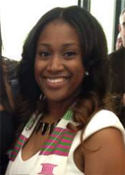 Deirdre Renee Green, MS, PhD
Deirdre Renee Green, MS, PhD
Epidemiologist
National Institute for Occupational Safety and Health (NIOSH)
Cincinnati, Ohio
 Deirdre Renee Green, MS, PhD
Deirdre Renee Green, MS, PhDEpidemiologist
National Institute for Occupational Safety and Health (NIOSH)
Cincinnati, Ohio
What was your educational and relevant work experience prior to enrolling in the OIP program?
Before joining the OIP program, I received my B.S. in Industrial Technology (Occupational Safety) from Iowa State University and my M.S. in Occupational and Environmental Health (Industrial Hygiene) from the University of Iowa.
What made you interested in the field of occupational injury prevention?
My background in industrial hygiene and occupational safety is where my interest in the health and protection of workers developed. I had the opportunity to take an injury epidemiology course where I learned to apply and critically review epidemiologic methods in injury research which really sparked my interest in continuing in the injury prevention field. My academic experiences have inspired me to further pursue a degree in injury prevention, with a specific interest in occupational settings.
What made you choose the University of Minnesota?
I chose the University of Minnesota for many reasons. The School of Public Health is among the top ranked schools in the nation and is one of the few schools that offer training in injury prevention with an emphasis in occupational injuries. The instructors and advisors within the SPH and the OIP program are all highly respected in their fields and have excellent reputations for their research, advisement, and dedication to student learning.
What type of job would you like to find upon completion of the program?
After completing the program, my goal is to serve in an academic or government research position as an injury epidemiologist while conducting injury prevention research and developing effective communication and education methods and eventually serving as a mentor to future researchers. I hope to be involved in both research and community outreach.
What would you say to a student considering the program?
I highly recommend the program. The SPH and the OIP program have supportive faculty and allow students to customize their degree through coursework and research. I am impressed with the campus, university, program and fellow students and couldn’t have made a better decision.
 Adam Schwartz, MS, PhD
Adam Schwartz, MS, PhDUX Researcher
Human Centered Design Institute
Emerson Electric Company
Fortune 500 American Multinational Company
(2018-present)
What was your educational and relevant work experience prior to enrolling in the OIP program?
My experience has included 2.5 years in the Israeli Defense Forces, as a combat engineer and researching intelligence, motivation, and safety. Subsequently, I worked for seven months in Risk Management for the City of Minneapolis studying transportation safety.
What made you interested in the field of occupational injury prevention?
I originally enrolled to study human factors and ergonomics at the University of Minnesota. One of my friends who is an industrial hygienist informed me of the world of environmental health sciences in public health and how it related to my interest in safety research which I have studied previously in human factors and industrial organizational psychology.
What made you choose the University of Minnesota?
The high quality education offered at UMN and the livability, including bikability, of the Twin Cities.
What type of job would you like to find upon completion of the program?
I would like to find a job where I can give back to my country. Living and traveling abroad made me realize what a wonderful place the United States is. Ideally, I would be an academic researching occupational injury in collaboration with the government.
What would you say to a student considering the program?
There is a great department full of interesting research projects and fun people here for you!
 Navneet Baidwan, MPH, PhD
Navneet Baidwan, MPH, PhDPost-Doctoral Scholar
University of Alabama at Birmingham
What was your educational and relevant work experience prior to enrolling in the OIP program?
Before enrolling in the OIP in spring 2014, I enrolled in the MPH (Masters of Public Health) program in the Environmental Health Sciences track at the University of Minnesota (UMN) in fall 2012. During my MPH, I began taking courses in injury prevention. I then completed a field experience with the Minnesota Department of Health (MDH) in the “Injury and Violence Prevention Unit” and, simultaneously, worked on my master’s project, “Minnesota hospital treated injuries: trends with changing economic times (2002-2012)” as part of my field experience. Before joining the UMN, I completed my Bachelors in Nursing degree at the All India Institute of Medical Sciences (AIIMS), a premier India medical institute.
What made you interested in the field of occupational injury prevention?
I became interested in injury prevention during my bachelor’s degree program when I learned about injury prevention and patient safety in hospitals. I started pursuing my interest in injury prevention by taking courses in the field during my MPH. My interest in the field increased as I started learning more and more about injuries, factors responsible, costs involved, and strategies to prevent or control the same. This was when I decided to apply for a PhD in the OIP program.
What made you choose the University of Minnesota?
I had always yearned for a research-oriented career and when I realized how comprehensive the University of Minnesota was with respect to the research programs, I decided to apply. What specifically caught my attention was a world class faculty and diverse injury prevention programs being offered that seemed to streamline my career goal. Today, I am really glad that I made the decision to join the UMN!
What type of job would you like to find upon completion of the program?
Upon completion of my PhD in the OIP program, I look forward to a research-oriented career.
What would you say to a student considering the program?
This is a program where creativity of the students is highly encouraged. The interests of the student in a particular topic are given importance and supported by the faculty.
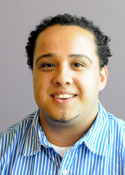
Project/Program Manager III
Division of Emergency Medical Services
Seattle and King County Public Health
Seattle, Washington
What was your educational and relevant work experience prior to enrolling in the OIP program?
Prior to enrolling in the OIP program, I completed undergraduate (BS) and graduate (MS) degrees in Industrial and Systems Engineering at the University at Buffalo, The State University of New York, concentrating in the field of Human Factors/ Ergonomics (HF/E). As a NIOSH trainee, my studies focused on work-related adverse health outcomes stemming from the HF/E domain. After completion of my studies at the University at Buffalo, I enrolled in the OIP program at the University of Minnesota. At the time of my enrollment, my relevant work experience included analyzing industrial workspaces for Greatbatch (implantable medical device company) for known HF/E issues.
What made you interested in the field of occupational injury prevention?
I was always interested in the science, math and medical fields growing up. Somehow, I wanted to mix all three interests together and it wasn’t until my years as an undergraduate student that I discovered the field of HF/E. In a nutshell, HF/E is the science of understanding the interaction between humans and machines. Utilizing principles in science and math, and then adapting them to the human body to understand how the human operates biomechanically, physiologically, and psychologically allows me to satisfy all three fields at once. My interests further evolved into the field of occupational injury prevention after I spent some time conducting HF/E-based research on workstations. It was intriguing to know my research would be used directly to help the workers by reducing the risk for injury.
What made you choose the University of Minnesota?
Choosing this university was not that hard of a decision. The University of Minnesota’s School of Public Health is one of the top schools in the nation. It also has exactly what I was looking for � a research-oriented Ph.D. program in occupational injury prevention that would allow me to integrate my HF/E background with public health practices and research.
What type of job would you like to find upon completion of the program? (or describe your current position)
Upon the completion of my doctoral degree at the University of Minnesota, I have obtained employment with the Texas Department of State Health Services’ Injury Epidemiology and Surveillance Branch as an injury epidemiologist. The State of Texas mandates all Emergency Medical System (EMS) runs and trauma-related hospital patient data be reported to the state’s EMS/Trauma Registry. As a subject matter expert on the Registry which collects national data elements (NTDB and NEMSIS), some of my activities include: cleaning and analyzing Registry data; producing state-wide and region-level reports; and consulting with stakeholders regarding Texas’ EMS response and trauma system. As the injury epidemiologist team lead, some of my activities include: coordinating the efforts of staff epidemiologist and ensuring that Federal, State, and other ad hoc reports are completed while assisting in the strategic planning of the Injury Epidemiology and Surveillance Branch to advance the program for the State of Texas.
What would you say to a student considering the program?
The program, from beginning to end, was very supportive of students with diverse backgrounds and had an objective in turning me into the best public health professional that I can be. The program desires success for all its students and as a result, it presents opportunities for success by way of research and funding opportunities, support for conference attendance and presentations, and networking opportunities. There are many factors that determine a candidate’s acceptance into the program but it should be known that if you are accepted, it is because they program believes in your success.
 Chris Gabel, DVM, PhD
Chris Gabel, DVM, PhDClinical Assistant Professor
Environmental Public Health Program
University of Wisconsin – Eau Claire
Eau Claire, Wisconsin
What was your educational and relevant work experience prior to enrolling in the OIP program?
After three years of undergraduate education I was accepted into the College of Veterinary Medicine at the University of Minnesota in St Paul and completed the four year program to receive my DVM. This coursework included public health courses as I considered that field and especially food safety. A year after that I returned for some post-graduate training in microbiology and immunology.
I initially worked in mixed animal practice settings (cattle, horses, dogs and cats) and later in small animal practice, traditional and holistic, along with behavioral consulting, and emergency clinic employment.
I then decided it was time to return to school and get into the field of Public Health since that was my goal when starting veterinary college. I entered the general Environmental and Occupational Health program at the U of Minnesota in pursuit of my MPH or MS. Before completing this I was accepted into the PhD program.
What made you interested in the field of occupational injury prevention?
During my Master’s program, along with the basic courses and a year of epidemiology, I took a course in Injury Prevention and Control. This seemed like a great application of epidemiology – looking at injuries much as we had looked at infectious disease, foodborne outbreaks, and more, in the past. I was encouraged in this effort both by Dr. Gerberich who was the director of the program, and Dr. Barber, a radiation health professor.
The course showed me much about the opportunity to prevent injuries rather than just do “accident investigations” and blame the worker for their own injury. I realized there were many ways to look at injury occurrence and find ways to change the environment to prevent them. Also, that we needed a lot more research into risk factors involved in injury occurrence. Veterinary medicine is a field with many sources of injuries from animals, and work settings that are often not optimal.
What made you choose the University of Minnesota?
I am from Minnesota, and received my veterinary degree here. Mainly, I knew this is one of the best Public Health programs anywhere. I entered initially in the general environmental occupational health program, and then entered the occupational injury prevention PhD program.
What type of job would you like to find upon completion of the program? (or describe your current position)
Initially, I was planning to work in a health department, such as the Minnesota Department of Health and did work there for a year and a half while in school. I also had the opportunity to teach epidemiology to Environmental Public Health students at UW – Eau Claire during the fall semester for several years. Upon graduating with my PhD, a one-year teaching position opened up at the University of Wisconsin, Eau Claire, as an instructor. I have contninued there since as a lecturer, instructor, and now Clinical Assistant Professor.
What would you say to a student considering the program?
I would tell them that is a great program in a field with a lot of opportunity. Injury prevention is needed in so many areas to keep workers safe in a wide variety of jobs.
They will receive a well-rounded education in all aspects of Public health including biostatistics, lots of epidemiology, research design and methods, and a variety of course work related to injury prevention including occupational settings. The faculty members are committed to good education and quality research. You can find the area you are most interested in and find an advisor and mentors that are experienced and helpful.
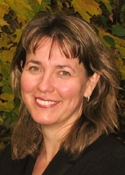 Nancy Nachreiner, BSN, MPH, PhD
Nancy Nachreiner, BSN, MPH, PhDNurse Consultant
Customs and Border Protection
Department of Homeland Security
Bloomington, Minnesota
What was your educational and relevant work experience prior to enrolling in the OIP program?
Prior to enrolling in graduate school, I had earned a Bachelor of Science in Nursing degree, and was working in long-term care. I had previously worked on a prolonged respiratory care unit at a metropolitan hospital.
What made you interested in the field of occupational injury prevention?
In my roles as a Certified Nursing Assistant and next as a Registered Nurse, we often dealt with after-effects of injuries, illnesses, and chronic diseases. I was interested in preventive measures to eliminate or at least decrease the severity and consequences of these conditions. The opportunity to focus my nursing skills on modifiable risk factors and prevention, and to work with the population of generally healthy workers was exciting. I felt there were so many important contributions that could be made to keep employees healthy and safe.
What made you choose the University of Minnesota?
The faculty and research opportunities at the University of Minnesota were extraordinary. I also had a strong interest in cancer clusters and agricultural health and safety, and was fascinated to learn about the cancer studies being conducted in the Division of Environmental Health Sciences. The faculty members were kind, compassionate, and experts in their respective fields. I was impressed with their genuine concern and mentoring of their students. There was also a great diversity of experiences available – from internships to volunteer opportunities for networking. The Midwest Center for Occupational Health and Safety (MCOHS) also had a long history of support from the National Institute for Occupational Safety and Health (NIOSH). The financial support of the NIOSH traineeship made it possible for me to obtain my graduate degrees.
What type of job would you like to find upon completion of the program? (or describe your current position)
I have been fortunate to use my experience from my MPH and PhD degrees in a variety of settings. I worked in various roles at the University of Minnesota for 18 years – from roles as a Research Assistant to Project Director, Lecturer, and faculty member. I had the opportunity to teach, conduct research and recruit and mentor students. After I left the University, I was able to focus exclusively on research. In my current role with the Department of Homeland Security, I am once again focusing on my skills as an Occupational Health Nurse. The graduate degrees I’ve earned from the University of Minnesota have prepared me well to perform a wide variety of job functions, and the flexibility to modify my roles over time.
What would you say to a student considering the program?
I am very pleased with my choice to pursue my degrees at the University of Minnesota. The faculty members are fantastic, and the opportunities have been amazing. All of my internships resulted in job offers, with the chance to continually expand my experiences and knowledge. The faculty members care about their students, and tailor your program to fit your needs and goals. The NIOSH support assisted me financially to complete my degrees; however, the multi-disciplinary approach of the center helped me build a network of colleagues across occupational health and safety fields. Dr. Susan Gerberich and Dr. Pat McGovern are international experts in their fields; they are also ideal mentors and role models. My advice to prospective students: if you have even a slight interest in the field of occupational injury prevention or occupational and environmental health nursing, I recommend speaking with the faculty at the University to discuss how a degree in these fields will assist you in building a successful career in the field of occupational health!
 Chia Wei, BS, MS, PhD
Chia Wei, BS, MS, PhDAssociate Researcher
Taiwan Centers for Disease Control and Prevention
Taipei City, Taiwan
What was your educational and relevant work experience prior to enrolling in the OIP program?
I majored in Public Health as an undergraduate at the Kaohsiung Medical University in my home country of Taiwan. Before I came to the University of Minnesota for my master’s degree, I was working with an Occupational Medicine Physician as a research assistant (involved as an interviewer) and I have also worked as a clinical study coordinator in the Cardiology Division at the Kaohsiung Medical University Hospital.
What made you interested in the field of occupational injury prevention?
I took a class called “Industrial Hygiene,” where I was introduced to the field of occupational injury, and I knew this was a field I was interested in. What furthered my interest in this field was how close it hit home to me. I have several relatives who are farmers and construction workers in Taiwan and this field directly impacts their daily lives. I realized that a large majority of people who are exposed to high-risk work are typically the only source of income for their families and are paid at lower wages — and this peaked my curiosity. One of the things I will work toward with my furthered education in this field is helping reduce injury of those who are at high risk through educating them on what I learn.
What made you choose the University of Minnesota?
I chose the University of Minnesota for its training program for Occupational Injury, which is supported by the Midwest Center for Occupational Health and Safety. With this reputable source backing up the program, combined with the vast amount of literature published from the U of M, I knew this was the institution for me—despite the frigid weather in the winter, which is so very different from the tropical lands of Taiwan.
What type of job would you like to find upon completion of the program?
Because I have realized that the majority of injuries occur when people do not pay attention to their own work safety or there is a gap in their proper education on the topic, I want to be involved in the communication and education of occupational hazards. To stress that injury prevention and education go hand-in-hand will be at the heart of my future work.
What would you say to a student considering the program?
I would let them know that I strongly recommend it because of the wide array of courses the Occupational Prevention program offers. From epidemiology to injury prevention, to human factors and work analysis to the plethora of seminars, everyone will find a niche area to focus on if they are interested in the material. Each course provides us with critical and informative knowledge about occupational injury prevention, and I do not think it’s taught better anywhere else.
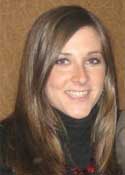 Katie Schofield Larson, MEHS, PhD, CSP
Katie Schofield Larson, MEHS, PhD, CSPAssistant Professor
Master of Environmental Health and Safety Program
University of Minnesota – Duluth
Duluth, Minnesota
What was your educational and relevant work experience prior to enrolling in the OIP program?
Prior to starting the OIP program, I earned a bachelor’s degree in Exercise Science and a master’s degree in Environmental Health and Safety (MEHS), both from the University of Minnesota Duluth. Immediately after graduating with my master’s degree, I worked as a graduate research assistant for the University of Minnesota – Duluth (UMD) and helped the Environmental Health and Safety Department develop formal indoor air quality standards and protocols. Then, I started my current job at The Builders Group of Minnesota, a self-insured workers’ compensation fund, where I work as a loss control consultant for over 200 construction companies.
What made you interested in the field of occupational injury prevention?
When I was an undergraduate, a student from the UMD MEHS program came to talk to my class. She explained what the whole “safety and injury prevention” idea was about, and how it applied out in the real world. I was immediately interested and applied for that program the next year. Once I graduated from the program and started working at my current job, I soon realized how important safety is in industry (especially construction), and how devastating, expensive, and all too common occupational injuries are. This has motivated me to continue my education to better understand and prevent occupational injury.
What made you choose the University of Minnesota?
While looking for potential PhD programs, I found the exact one that complemented my past educational experience, current work, and future goals, and it was right in my backyard! Based on my positive experience at UMD, I knew I couldn’t go wrong staying in the University of Minnesota system, especially with its excellent reputation for academics, faculty, and research. When I met the current faculty and students on a visit I was completely sold.
What type of job would you like to find upon completion of the program?
I really enjoy working in the construction safety field and directly with contractors and their employees. I think it gives you an immediate chance to make an impact on a personal level. I definitely want to continue this type of work, and eventually use this knowledge in a teaching or academic position.
What would you say to a student considering the program?
From Day 1 of the application process, I felt that everyone in this program, division, and school was on my side. The faculty is approachable and generous with their time, the fellow students are great, the classes are challenging, and programs can be tailored for individual interests. The U of M has so many academic, professional, and social opportunities to offer, and the Twin Cities is an excellent place in which to live and work.
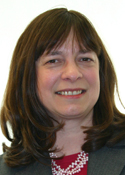 Debora J. Boyle, DVM, MPH, PhD
Debora J. Boyle, DVM, MPH, PhDSenior Public Health Analyst
Public Health and Preparedness Team Lead
The Tauri Group, Washington, DC
University of Minnesota
What was your educational and relevant work experience prior to enrolling in the OIP program?
Prior to starting the OIP program, I graduated from the University of North Dakota, in Grand Forks and worked as a registered nurse in Fargo, ND. Following an interest in medicine and public health, I completed my DVM and MPH degrees at the University of Minnesota. After working as a small animal veterinarian, I transitioned to an epidemiology position at the Minnesota Department of Health (MDH), working in the area of occupational and injury epidemiology.
What made you interested in the field of occupational injury prevention?
While I was working at the MDH, I began participating on studies looking at injuries in highway and agricultural workers. This led to my interest in identifying and preventing occupational injuries. The design and conduct of occupational injury research was challenging and there was a lot of opportunity to make a direct impact.
What made you choose the University of Minnesota?
Over the course of my career, I’d worked with many University of Minnesota graduates and also attended the University through the School of Public Health and the College of Veterinary Medicine. Given the relationships that I’d already built at the University, I was already aware of the excellent reputation of the University. I met with a number of faculty members and was pleased to work with Dr. Gerberich on my PhD.
What type of job would you like to find upon completion of the program? (or describe your current position)
Since completion of the program, I’ve worked for both state and federal government, as well as at the University of Minnesota. I am currently located in Washington, DC and work as a consultant for The Tauri Group as a Sr. Public Health Analyst. In this capacity, I support a federal agency program by providing public health and technical expertise. I also lead a multi-disciplinary public health and preparedness team that provides support across the United States to local, state and federal stakeholders.
What would you say to a student considering the program?
The University of Minnesota was a wonderful home to me, both personally and professionally. The academic program was challenging, but I always felt very well supported by my adviser and committee as well as other professors. This opportunity opened many doors to me professionally – and has allowed me to apply my knowledge in many different work settings.
 Leslie Nordgren, MPH, PhD
Leslie Nordgren, MPH, PhDResearch Analysis Specialist
Senior Office of Rural Health and Primary Care
Minnesota Department of Health, St. Paul, Minnesota
What was your educational and relevant work experience prior to enrolling in the OIP program?
Prior to entering the OIP program, I earned a bachelor’s degree in dental public health and a master of public health degree in epidemiology at the University of Minnesota. At the time I entered the program, I was working for Allina Hospitals and Clinics, where I was the patient safety project manager for 42 medical clinics and 10 hospitals. Through this work, I was introduced to the study of human factors, as it relates to designing work processes that preclude injuries and errors. I became very interested in methods of averting injuries in both patients and medical staff, and I wanted to learn more about the study of injury prevention and control.
What made you interested in the field of occupational injury prevention?
In my work at the hospital and clinic setting, I became aware of the hazards surrounding the work environment, especially in the clinical setting. Many of the injuries suffered by the staff were extremely severe, with long lasting adverse effects on their careers and quality of life. I also became aware that the financial costs to the organization were extremely high. Occupational injuries to healthcare personnel are also one of many factors that contribute to increasing health-care costs.
What made you choose the University of Minnesota?
I knew that the University of Minnesota was very strong in the area of research. I was also very excited to find that there was a PhD program that specialized in occupational injury prevention research with courses available in human factors design and evaluation.
What type of job would you like to find upon completion of the program?
I wanted to continue the work that I was doing in the area of prevention of injuries to workers in a clinical setting, with the implementation of research-based injury prevention interventions. This entails using principles of human factors and contextual work design to create work processes that prevent injuries, with evaluation of injury rates both before and after applying new interventions. My goals in this work are to streamline and design injury events out of the work process and to conduct research to evaluate the effectiveness of the work process changes.
What would you say to a student considering the program?
You’ll receive a tremendous amount of support from both faculty and fellow students in this program, as well as a valuable hands-on education in cutting-edge research methodology. The interdisciplinary approach within this program provides insight into the many possibilities that may be considered when interacting with public health professionals who have a wide range of expertise.
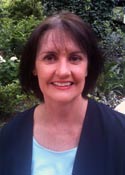 Jane Elkington, MPH, PhD
Jane Elkington, MPH, PhDDirector, Jane Elkington & Associates
Lecturer, Macquarie University, New South Wales, Australia
What was your educational and relevant work experience prior to enrolling in the OIP program?
I am Australian and my undergraduate degree was in health sciences and I worked in health promotion in rural Australia for 2.5 years before embarking on an MPH in Health Education at the University of Minnesota. I had completed my Masters’ degree immediately before commencing my doctoral studies in the OIP program.
What made you interested in the field of occupational injury prevention?
I had done some work on road safety in Australia during the time that random breath testing came into effect (1980s) which significantly and instantly reduced the road toll. Then an elective subject in injury prevention I took led by Prof Gerberich as part of my MPH inspired me to believe that all kinds of injury problems (not just road trauma) were preventable.
What made you choose the University of Minnesota?
I had chosen it for my MPH, in part, based on reputation (which stretched all the way to Australia) and, in part, the idea of lakes turning to ice-skating rinks in winter – which was quite a change from Sydney beaches – It seemed like a big adventure. But I stayed on for my PhD, based on what I had learned about the School of Public Health while I was there – its links with community, its commitment to inter-disciplinary studies and the dedication of faculty – had made it a wonderful learning environment.
What type of job would you like to find upon completion of the program? [If you have already commenced a position, you can elaborate upon that.]
I returned to Australia and became the Injury Prevention Coordinator for the New South Wales (state) Health Department. After six years in that job, I became a consultant to a range of government departments in injury research and policy development. I have been doing that ever since, alongside four years appointed to a research institute managing a study on heavy vehicle safety. I have been on several state and national advisory committees, am the Vice President of a non-government organization devoted to the prevention of injury to young people, and have an appointment at Macquarie University in their Health Studies program.
What would you say to a student considering the program?
Look closely at what the school has to offer and what life in the Twin Cities is like; I think you will be impressed by both. I was sent a copy of the entertainment newspaper (at the time) by the head of the Health Education program (the wonderful Dr Ray Carlaw) in considering where to do my MPH, and I realized what a culturally rich and interesting place it was to live. The academic program, in and of itself, was a wonderful experience in terms of being surrounded by inspiring people and exciting projects, not to mention finding out what I could do when I set my mind to it (and had a lot of good people guiding me) – but it has opened many doors for me professionally.

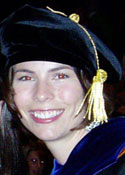
Associate Professor, Epidemiology, School of Public Health, Oregon Health and Science University;
Core Investigator, VA Health Services Research & Development Center of Innovation
VA Portland Healthcare System, Portland, Oregon
What was your educational and relevant work experience prior to enrolling in the OIP program?
My undergraduate education was in Biology, and I did laboratory research for several years in Plant Pathology, Molecular Biology, and Animal Science. While I loved being a research scientist, I wanted to do work that could have a greater impact on population health. A subsequent experience working in community health in Mexico City confirmed what my laboratory mentors had been telling me: Public Health was my ticket.
What made you interested in the field of occupational injury prevention?
Living and working in Mexico made me acutely aware of the dangers faced every day by workers, particularly among members of marginalized populations such as new immigrants. Though the issues are vastly different in the US, some populations – migrant and seasonal farm laborers, for example – still bear the brunt of occupational health hazards. I was fascinated by the ways in which culture, history, politics, and economics intertwine to generate this unfair social stratification, and I wanted in some way to contribute to safer workplaces for all. This idea of equal access to healthy environments, occupational and otherwise, is a core pillar of the Occupational Injury Prevention Research Training Program and, more generally, the Division of Environmental Health Sciences.
What made you choose the University of Minnesota?
I interviewed at several leading schools of public health before making my decision. The University of Minnesota School of Public Health is renowned for its excellent faculty, rigorous curriculum, and cutting-edge research. A major factor for me, though, was that Minnesota was also a very friendly and supportive place to be. Those that I met truly believed they could contribute to the betterment of society, and I felt a strong sense of collaboration rather than competition. Once enrolled, I found that these were indeed strong principles not only in our program, but throughout the Division of Environmental Health Sciences and the School of Public Health. There is no comparison to the camaraderie I felt with my fellow students and with faculty during (and since) my training. Through all the challenges of completing coursework, research, and a dissertation, this network of friends and mentors, and the positive, supportive environment we were in, were absolutely my mainstay.
What type of job would you like to find upon completion of the program? [If you have already commenced a position, you can elaborate upon that.]
I thrive in the academic environment, and conducting research in injury epidemiology, prevention, and control, while also teaching and mentoring students. Upon graduating in August, 2006, I made a difficult choice between an NIH NRSA postdoctoral fellowship studying social determinants of injury, and a VA Health Service Research and Development fellowship examining polytrauma and blast-related injuries in new veterans. The opportunity to work with veterans, conduct more applied work, and extend my learning in health services and rehabilitation research, ultimately led me to the VA position. I continue in this position today, conducting injury-related research in the VA, focused on traumatic brain injury, opioid overdose, and gun violence prevention. I also conduct children’s injury prevention research in the university setting, and advise and mentor epidemiology MPH and PhD students.
What would you say to a student considering the program?
First, let’s address the weather! As a native of the Pacific Northwest, the Midwestern climate and the infamous winters were top on my mind when choosing where to relocate. I was told at the time, though – and can now attest to this fact – that Minnesotans do whatever they can to embrace their climate and find ways to enjoy every season. It’s been an adventure, to say the least. Minneapolis and St. Paul are fantastic cities, with enormous parks and lakes, deep-rooted culture, intellectual pursuits, and a nightlife to boot!
I would also say to choose a program and faculty that is conducting, or will support your conducting, research that truly interests you – you’ll be doing a lot of it! Find an academic environment in which you fit – one that motivates you, stimulates your interests, pushes you to the limits intellectually. Get rolling right away with building a network of friends, mentors, and colleagues. Graduate school can be extremely challenging and has a way of making you question your intentions, your passions, who you are and who you want to be. There is no alternative to a great network for keeping you focused, fulfilled, and on track. Have fun!
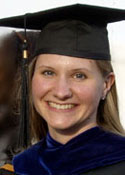 Denise Feda, MS, PhD
Denise Feda, MS, PhDResearch Assistant Professor, Behavioral Medicine
University of Buffalo, Buffalo, New York
What was your educational and relevant work experience prior to enrolling in the OIP program?
I received my bachelor’s degree from Saint Olaf College in Biology and Computer science and my master’s degree from the University of Minnesota in Environmental Health Sciences, with a focus on infectious disease epidemiology. Prior to enrolling in the program I worked at the Minnesota Department of Health, and at the University of Minnesota in the Division of Epidemiology.
What made you interested in the field of occupational injury prevention?
As part of the first year Environmental Health Sciences curriculum, I took a class that covered a broad range of topics and was introduced to the field. I found it interesting and continued on to take the introduction to occupational health class. After that, I knew that the field was of interest to me and I asked about the program.
What made you choose the University of Minnesota?
I am from Minnesota and I love it here. The School of Public Health is an excellent place to study and there are numerous opportunities to connect with professionals in the field, especially with the Minnesota Department of Health.
What type of job would you like to find upon completion of the program?
My desire was to either become a professor or return to a government position either at the Minnesota Department of Health, the Centers for Disease Control and Prevention, or the World Health Organization.
What would you say to a student considering the program?
Come to visit and ask lots of questions.
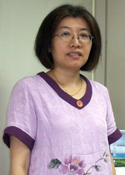 Suhsing Lee, PhD, MPH
Suhsing Lee, PhD, MPHAssociate Professor
Department of Occupational Safety and Health
Chang Jung Christian University, Taiwan
What was your educational and relevant work experience prior to enrolling in the OIP program?
I am Taiwanese and my undergraduate degree was in nursing. After working as a nurse for a year, I was admitted into the MPH program in Environmental Health Science at the University of Minnesota. After graduation, I worked for the Taiwanese government in the Department of Labor Inspection, on the Council of Labor Affairs for about 2 years.
What made you interested in the field of occupational injury prevention?
I completed my master’s thesis on the topic of “boating injuries.” Afterward, working in the field of occupational health and safety inspection and reviewing hundreds of occupational injury reports, I became well aware of the impact that an occupational injury has on injured personnel and the company. Therefore, I decided to advance myself by enrolling in the occupational injury prevention program.
What made you choose the University of Minnesota?
I received my MPH degree from the University of Minnesota and completed my master’s thesis through working with Dr. Gerberich, whom I appreciated so much for her kindness and knowledgeable advice. When I decided to pursue a PhD degree, I chose the occupational injury program since this program provided good quality courses and, most of all, the best faculty to learn from.
What type of job would you like to find upon completion of the program?
Upon completion of the program, I received an offer for the position of assistant professor in the Department of Occupational Safety and Health, at Chang-Jung Christian University in Taiwan. I am currently still working in this department.
What would you say to a student considering the program?
There are still so many hazards to observe, investigate and intervene in the area of occupational injury prevention. In this profession, we can help to reduce the unnecessary loss of life and resulting sorrow in the workplace. It is meaningful work.
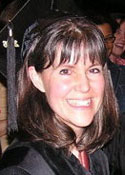 Muree Larson-Bright, PhD, MPH
Muree Larson-Bright, PhD, MPHChief, Staffing Audits & Research Branch Center for Health Care Quality California Department of Public Healt
Sacramento, California
What was your educational and relevant work experience prior to enrolling in the OIP program?
I have a B.A. degree in International Relations (University of Minnesota) and a MPH (University of New Mexico). I had more than fifteen years experience in social work, public health research, and state government.
What made you interested in the field of occupational injury prevention?
I loved the challenge and opportunity offered by an inter-disciplinary field that draws on environmental, epidemiological, organizational, and social justice methods/issues.
What made you choose the University of Minnesota?
The School of Public Health was one of the top programs in the nation and one of the few that had an injury-related research track.
What type of job would you like to find upon completion of the program? (or describe your current position)
Since graduation in July 2006, I have worked as a data analyst with the State of Minnesota’s Department of Human Services and have managed analytic/research teams in two different departments within the California Health and Human Service Agency.
What would you say to a student considering the program?
Being a student at the University of Minnesota is an incredible opportunity. I had excellent mentoring, supportive fellow students, and interesting coursework. My family found Minnesota a great place to “be a family” – there are many parks, kid-oriented programs, and great schools. Career-wise, most valuable was the opportunity to join an existing five-state agricultural injury project for my dissertation work.
 Starr Kelly Sage, MPH, PhD
Starr Kelly Sage, MPH, PhDAssistant Professor of Public Health
Department of Health and Human Performance
University of St. Thomas
St. Paul, MN
What was your educational and relevant work experience prior to enrolling in the OIP program?
Prior to starting the PhD program in Injury Prevention, I completed a Masters degree in epidemiology. I also have a Bachelors degree in biology. Early in my graduate school career, I worked at the Minnesota Department of Health for several years. Since enrolling in the injury prevention program I have been actively involved as a research assistant on a large study that examines risk factors for work-related injury and violence against Minnesota’s licensed educators.
What made you interested in the field of occupational injury prevention?
My interest in injury prevention was piqued during an undergraduate study abroad experience in Ghana, West Africa. During my months in West Africa it became quite clear to me how significantly one’s immediate environment can negatively impact their health. Across the country I saw how those working and living in excessively hazardous environments more frequently experienced serious injuries and even death. In several instances I saw how workers were forced to use extremely outdated and hazardous machines and tools, that had been used and then imported from developed countries that had no further use for them. The negative impact of the hazardous working conditions was further compounded by a lack of access to sufficient post-injury medical care. After my experience in Africa, I decided that I wanted to be involved in work to reduce injury hazards by modifying the environments, both in the U.S. and abroad, in which we all work and live.
What made you choose the University of Minnesota?
The School of Public Health (SPH) at the University of Minnesota (U of M), is well-known for its world-class faculty, extensive curriculum, and research opportunities. Upon the completion of my masters studies at the U of M, I explored several other PhD programs before deciding to stay here. In exploring these programs, it became quite evident that the U of M’s SPH was able to offer me above and beyond what I’d get at other institutions, in terms of research opportunities and the close personal relationships I’d develop with faculty members who are truly interested in my success.
What type of job would you like to find upon completion of the program?
Upon completion, I’d like to assume a faculty position. In this capacity I hope to be involved with both teaching and research. I’ve always thought that education is power, and I’d love to teach students, the next generation of public health professionals, and get them excited about the many opportunities in public health. In addition to teaching, I also have an interest in conducting research with the goal of reducing injuries in the communities most affected (i.e., low-income populations and communities of color).
What would you say to a student considering the program?
The SPH has many great research opportunities for you to pursue, so make sure you fully explore all of the potential opportunities and carefully select a faculty mentor to work closely with. Having a good relationship with your advisor is critical to your success! In addition to the numerous academic opportunities, the U of M is located in an exciting metropolitan community and should you decide to come here, there will be no shortage of social, cultural, and art events for you to explore while you’re not studying!
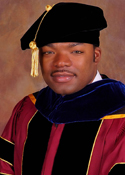 Quintin Williams, BS, PhD
Quintin Williams, BS, PhDClinical Assistant Professor, Health Studies
Department of Mechanical and Industrial Engineering
University of Illinois
Chicago, Illinois
What was your educational and relevant work experience prior to enrolling in the OIP program?
Work, Work, Work was my experience prior to enrolling in the OIP program. I spent many years working in industry. My final industrial position was with a company that specialized in the development of commercial and Navy submarine batteries. While working I also earned a BS in Mechanical and Industrial Engineering from the University of Illinois.
What made you interested in the field of occupational injury prevention?
While working in battery manufacturing, I was severely burned by the molten lead and sulfuric acid. After this injury, surgery, and a huge dispute with management to protect my health and keep my job, I decided to become an engineer and learn how to design out these types of hazards; but it wasn’t until I found public health that I have learned how to deal with these situations on a population level.
What made you choose the University of Minnesota?
This was one of my easiest decisions to make. I traveled across the country in search of a program that would allow me to maintain my engineering skills while applying them to public health and the only school that offered that combination with a strong mentoring component was the University of Minnesota. So when I received the offer, I gladly accepted.
What type of job would you like to find upon completion of the program? [If you have already commenced a position, you can elaborate upon that.]
Upon completion of the program I would be very interested in working with an agency like the National Institute for Occupational Safety and Health or the National Center for Injury Prevention and Control where I can be involved in intervention research, focused on sustaining and improving worker health and safety.
What would you say to a student considering the program?
If you are interested in being involved in research that has a potential to impact the community in a truly beneficial way, then this is the program for you. With a mix of coursework in epidemiology, biostatistics, safety engineering, and psychology coupled with public health research, one is given the right foundation to become a competent and successful researcher.
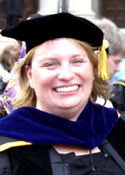 Deborah Merchant Langner, MS, PhD
Deborah Merchant Langner, MS, PhDHealth Officer
New London, New Hampshire
What was your educational and relevant work experience prior to enrolling in the OIP program?
Under the mentorship of Dr. Lorann Stallones at Colorado State University, I earned my M.S. in Environmental Health, and then continued on as a program manager on one of her research projects addressing injury among Colorado farm families. An opportunity arose doing similar research with the occupational health unit at the Minnesota Department of Health, and I moved to Minneapolis to direct that project. Within a month I met Dr. Gerberich, because you can’t do injury research in Minnesota without knowing Sue. I enrolled in the OIP program while continuing to work at the Health Department.
What made you interested in the field of occupational injury prevention?
Born and raised on the water, I spent a few years as a commercial longline fisherman in the North Atlantic. “The Deadliest Catch” is not overly sensationalized; I worked long hours, often under adverse conditions, with each trip bringing new challenges. My Captain was extremely safety-conscious, and he taught us all to stop and think before each and every step. This experience gave me a great appreciation for how the seemingly simplest alteration in an activity can make an enormous difference, and how quickly a life-changing injury can occur if actions aren’t thought through fully.
What made you choose the University of Minnesota?
It was down the street from work—at a brisk jog I could go from my office desk to a classroom desk in five minutes. The flexibility of the program, which allowed me to take what I was learning in the classroom and translate it into activities in a world-class health department, was an experience like no other.
What would you say to a student considering the program?
The opportunities in this program are limited only by your imagination. Go for it! Dream big, ask questions, take chances, talk to everyone, and you will learn more than you ever thought possible.
POST-DOCTORAL FELLOWS/VISITING SCHOLARS
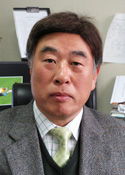 Tae-Yong Lee, MD, PhD
Tae-Yong Lee, MD, PhDProfessor, MD, Dr PH
Chungnam National University, School of Medicine
Department of Preventive Medicine
Daejeon, South Korea
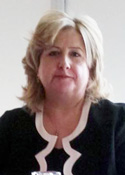 Sibel Erkal, PhD
Sibel Erkal, PhDProfessor
Department of Family and Consumer Sciences
Faculty of Economics and Administrative Sciences
Hacettepe University
Ankara, Turkey
Educational and work experience:
I completed undergraduate and graduate degrees in Family and Consumer Sciences at the University at Hacettepe, Ankara,Turkey (Ph.D. degree, 1997; B.S. degree,1992). My areas of expertise; Home and Occupational Injury; Housing and health; Hygiene and Environment
Interest in the field of occupational injury prevention:
During my Master’s program, I took a course about individual and Community Health, Injury, environmental health etc. While I was working at the Family and Consumer Sciences, I began participating on studies looking at injuries in home and work. This led to my interest in identifying and preventing injuries. I also have my master’s thesis “The examination of the factors that cause housing home accidents/injury”. After completing my master’s thesis, I prepared a research paper on injuries.
Why choose the University of Minnesota?
The School of Public Health (SPH) at the University of Minnesota (U of M), is well-known for its world-class faculty, extensive curriculum, and there are numerous research opportunities to connect with professionals in the field. The faculty members are experts in their respective fields. Dr. Susan Goodwin Gerberich is an international expert in her field.
Opportunities upon completion of participation in this program?
Upon completion of the program, I received an offer for the position of Associate Professor in the Department of Family and Consumer Sciences, Faculty of Economics and Administrative Sciences,at Hacettepe University in Turkey. I am currently still working in this department as a Professor.
What would you say to others considering this program?
Dr. Susan Goodwin Gerberich is an ideal mentor and role model. I appreciated so much her kindness and knowledge. I feel very lucky to have had the opportunity to work with Dr. Gerberich and her team. Through this program, we can help to reduce the unnecessary loss of life and sorrow resulting from adverse injurious events that occur in the workplace and home.